ZHCSC02H September 2012 – September 2015 LM3642
PRODUCTION DATA.
- 1 特性
- 2 应用
- 3 说明
- 4 修订历史记录
- 5 Pin Configuration and Functions
- 6 Specifications
- 7 Detailed Description
- 8 Application and Implementation
- 9 Power Supply Recommendations
- 10Layout
- 11器件和文档支持
- 12机械、封装和可订购信息
6 Specifications
6.1 Absolute Maximum Ratings
over operating free-air temperature range (unless otherwise noted)(1)(2)(3)| MIN | MAX | UNIT | |
|---|---|---|---|
| VIN, VSW,VOUT | –0.3 | 6 | V |
| VSCL, VSDA, VSTROBE, VTX, VLED | –0.3 | the lesser of (VIN+0.3) w/ Vmax | V |
| Continuous power dissipation(4) | Internally limited | ||
| Junction temperature (TJ-MAX) | 150 | °C | |
| Maximum lead temperature (soldering) | See(5) | ||
| Storage temperature, Tstg | −65 | 150 | °C |
(1) Stresses beyond those listed under Absolute Maximum Ratings may cause permanent damage to the device. These are stress ratings only, which do not imply functional operation of the device at these or any other conditions beyond those indicated under Recommended Operating Conditions. Exposure to absolute-maximum-rated conditions for extended periods may affect device reliability.
(2) All voltages are with respect to the potential at the GND pin.
(3) If Military/Aerospace specified devices are required, contact the TI Sales Office/Distributors for availability and specifications.
(4) Internal thermal shutdown circuitry protects the device from permanent damage. Thermal shutdown engages at TJ=150°C (typical) and disengages at TJ = 135°C (typical). Thermal shutdown is verified by design.
(5) For detailed soldering specifications and information, refer to Texas Instruments Application Note 1112: DSBGA Wafer Level Chip Scale Package (SNVA009).
6.2 ESD Ratings
| VALUE | UNIT | |||
|---|---|---|---|---|
| V(ESD) | Electrostatic discharge | Human-body model (HBM), per ANSI/ESDA/JEDEC JS-001(1) | ±2000 | V |
6.3 Recommended Operating Conditions
over operating free-air temperature range (unless otherwise noted)(1)| MIN | MAX | UNIT | |
|---|---|---|---|
| VIN | 2.5 | 5.5 | V |
| Junction temperature (TJ) | –40 | 125 | °C |
| Ambient temperature (TA)(2) | –40 | 85 | °C |
(1) All voltages are with respect to the potential at the GND pin.
(2) In applications where high power dissipation and/or poor package thermal resistance is present, the maximum ambient temperature may have to be derated. Maximum ambient temperature (TA-MAX) is dependent on the maximum operating junction temperature (TJ-MAX-OP = 125°C), the maximum power dissipation of the device in the application (PD-MAX), and the junction-to-ambient thermal resistance of the part/package in the application (RθJA), as given by the following equation: TA-MAX = TJ-MAX-OP – (RθJA × PD-MAX).
6.4 Thermal Information
| THERMAL METRIC(1) | LM3642 | UNIT | |
|---|---|---|---|
| YZR (DSBGA) | |||
| 9 PINS | |||
| RθJA | Junction-to-ambient thermal resistance | 100.0 | °C/W |
| RθJC(top) | Junction-to-case (top) thermal resistance | 0.7 | °C/W |
| RθJB | Junction-to-board thermal resistance | 16.4 | °C/W |
| ψJT | Junction-to-top characterization parameter | 3.2 | °C/W |
| ψJB | Junction-to-board characterization parameter | 16.4 | °C/W |
| RθJC(bot) | Junction-to-case (bottom) thermal resistance | n/a | °C/W |
(1) For more information about traditional and new thermal metrics, see the Semiconductor and IC Package Thermal Metrics application report, SPRA953.
6.5 Electrical Characteristics
MIN and MAX limits apply over the full operating ambient temperature range (−40°C ≤ TA ≤ 85°C). Unless otherwise specified, TA = 25°C, VIN = 3.6 V.(1)(2)| PARAMETER | TEST CONDITIONS | MIN | TYP | MAX | UNIT | ||
|---|---|---|---|---|---|---|---|
| CURRENT SOURCE SPECIFICATIONS | |||||||
| ILED | Current source accuracy | 1-A flash, VOUT = 4 V | –6% | 1.04 | 6% | A | |
| 1.5-A flash, VOUT = 4 V | –8% | 1.5 | 8% | A | |||
| 24-mA torch, VOUT = 4 V (LM3642-LT) |
–10% | 24 | 10% | mA | |||
| 48.4 mA Torch, VOUT = 4 V | –10% | 48.4 | 10% | mA | |||
| VHR | Current source regulation voltage | ILED = 1.5 A | Flash | 275 | 12% | mV | |
| ILED = 24 mA/48.4 mA | Torch | 150 | 15% | ||||
| VOVP | Output overvoltage protection trip point | ON threshold | –2.8% | 5 | 2.2% | V | |
| OFF threshold | –2.7% | 4.88 | 2.3% | ||||
| STEP-UP DC-DC CONVERTER SPECIFICATIONS | |||||||
| RPMOS | PMOS switch on-resistance | IPMOS = 1 A | 120 | mΩ | |||
| RNMOS | NMOS switch on-resistance | INMOS = 1 A | 90 | ||||
| ICL | Input current limit | –17% | 1.6 | 15% | A | ||
| –17% | 1.88 | 15% | |||||
| VIVFM | Input voltage flash monitor trip threshold | –3.2% | 2.9 | 3.2% | V | ||
| UVLO | Undervoltage threhold | Falling VIN | –4% | 2.8 | 4% | V | |
| ƒSW | Switching frequency | –9% | 4 | 9% | MHz | ||
| IQ | Quiescent supply current | Device not switching pass mode | 0.75 | mA | |||
| ISB | Standby supply current | Device disabled 2.5 V ≤ VIN ≤ 5.5 V | 1.6 | 4 | µA | ||
| tTX | Flash-to-torch LED current settling time | TX low to high ILED = 1.5 A to 24 mA/48.4 mA |
4 | µs | |||
| STROBE, TX VOLTAGE SPECIFICATIONS | |||||||
| VIL | Input logic low | 2.5 V ≤ VIN ≤ 5.5 V | 0 | 0.4 | V | ||
| VIH | Input logic high | 2.5 V ≤ VIN ≤ 5.5 V | 1.2 | VIN | |||
| I2C-COMPATIBLE INTERFACE SPECIFICATIONS (SCL, SDA) | |||||||
| VIL | Input logic low | 2.5 V ≤ VIN ≤ 5.5 V | 0 | 0.4 | V | ||
| VIH | Input logic high | 2.5 V ≤ VIN ≤ 4.2 V | 1.2 | VIN | |||
| VOL | Output logic low | ILOAD = 3 mA | 400 | mV | |||
(1) All voltages are with respect to the potential at the GND pin.
(2) Minimum (Min) and Maximum (Max) limits are specified by design, test, or statistical analysis. Typical (Typ) numbers are not verified, but do represent the most likely norm. Unless otherwise specified, conditions for typical specifications are: VIN = 3.6 V and TA = 25°C.
6.6 Timing Requirements
See Figure 1.| MIN | NOM | MAX | UNIT | ||
|---|---|---|---|---|---|
| t1 | SCL clock frequency | 2.4 | ns | ||
| t2 | Data In setup time to SCL High | 100 | ns | ||
| t3 | Data out stable after SCL Low | 0 | ns | ||
| t4 | SDA low setup time to SCL low (start) | 100 | ns | ||
| t5 | SDA high hold time after SCL high (stop) | 100 | ns | ||
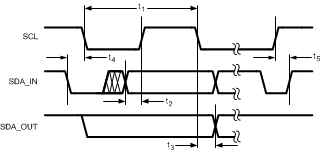 Figure 1. I2C-Compatible Interface Specifications
Figure 1. I2C-Compatible Interface Specifications
6.7 Typical Characteristics
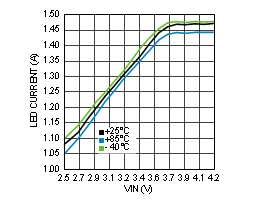 Figure 2. Flash LED Current vs. VIN
Figure 2. Flash LED Current vs. VIN
VLED = 3.8 V, ILED = 1.5 A
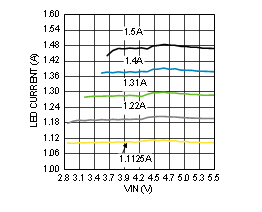 Figure 4. High Codes Flash LED Current vs. VIN
Figure 4. High Codes Flash LED Current vs. VIN
VLED = 3.8 V, Temp = 25°C
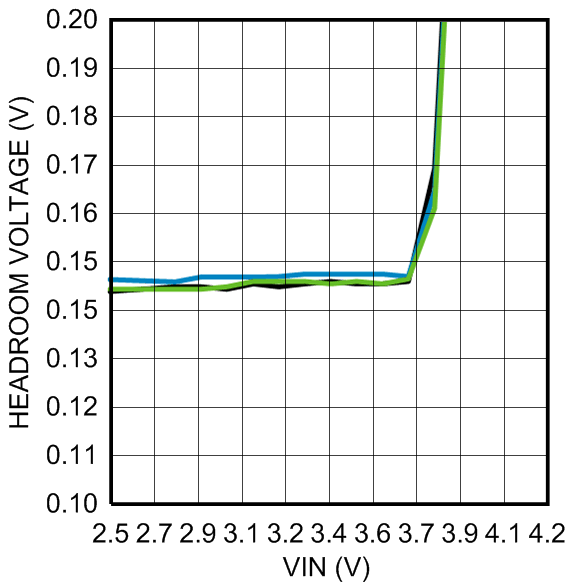 Figure 6. Torch Headroom Voltage vs. VIN
Figure 6. Torch Headroom Voltage vs. VIN
VLED = 3.7 V, ILED = 375 mA
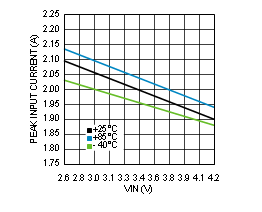 Figure 8. Peak Input Current Limit vs. VIN
Figure 8. Peak Input Current Limit vs. VIN
VLED = 3.8V, IIN Setting = 1.9 A
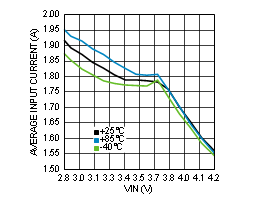 Figure 10. Average Input Current Limit vs. VIN
Figure 10. Average Input Current Limit vs. VIN
VLED = 3.8 V, IIN Setting = 1.9 A
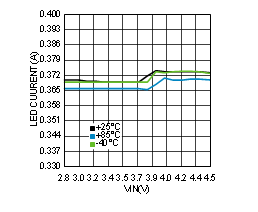 Figure 3. Torch LED Current vs. VIN
Figure 3. Torch LED Current vs. VIN
VLED = 3.7 V, ILED = 375 mA
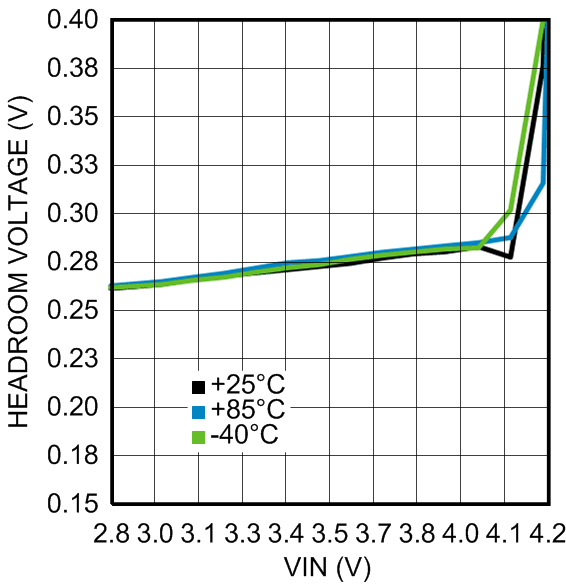 Figure 5. Flash Headroom Voltage vs. VIN
Figure 5. Flash Headroom Voltage vs. VIN
VLED = 3.8 V, ILED = 1 A
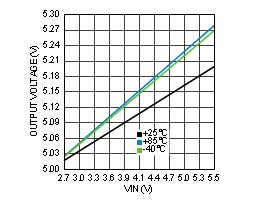 Figure 7. Output Voltage vs. VIN
Figure 7. Output Voltage vs. VIN
VLED = 3.8 V
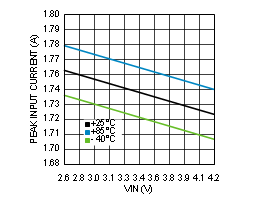 Figure 9. Peak Input Current Limit vs. VIN
Figure 9. Peak Input Current Limit vs. VIN
VLED = 3.8 V, IIN Setting = 1.7 A
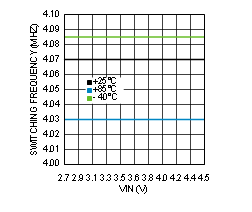 Figure 11. Switching Frequency vs. VIN
Figure 11. Switching Frequency vs. VIN
VLED = 3.8 V